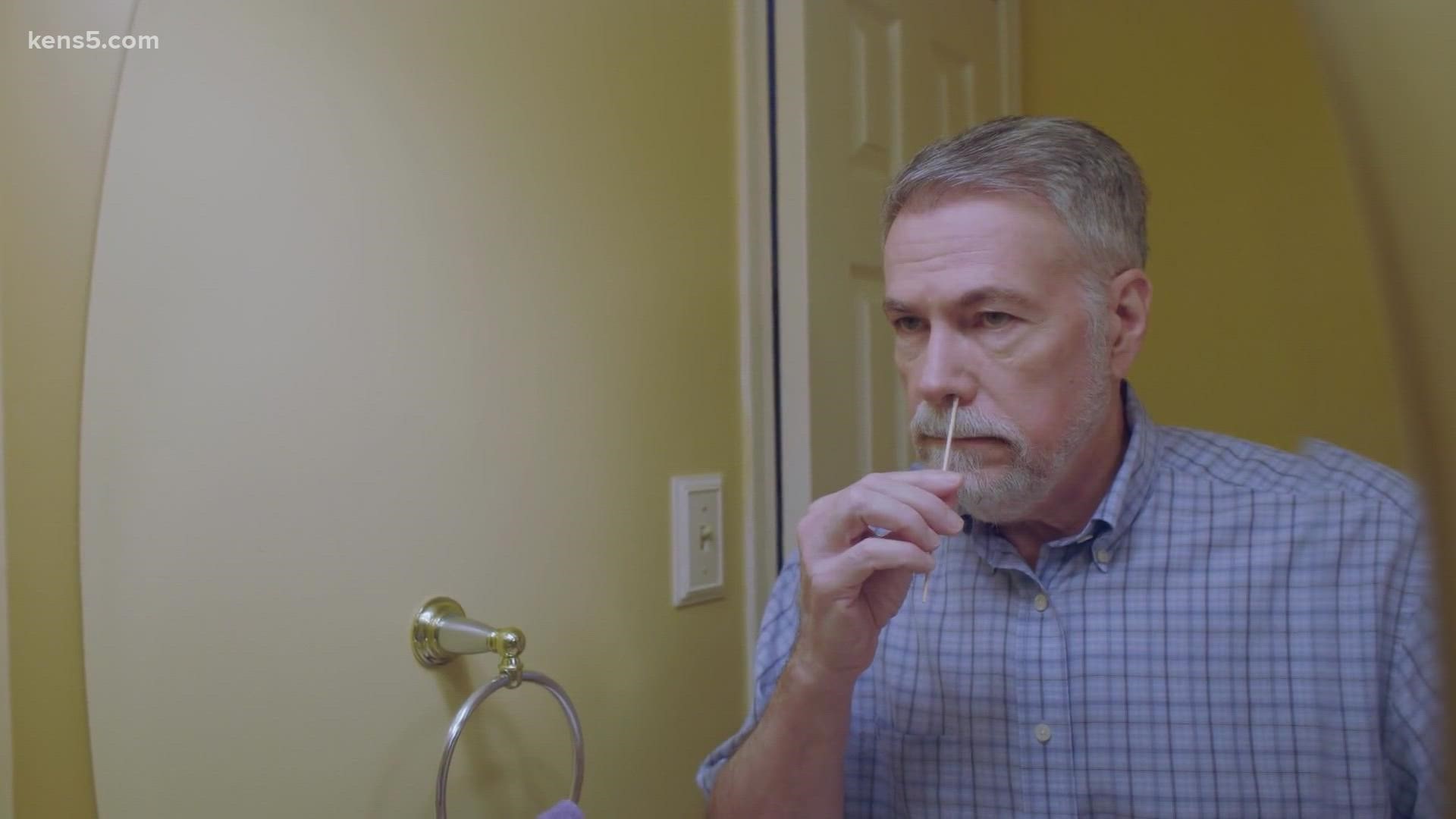SAN ANTONIO — Millions of free at-home COVID tests from the U.S. government are arriving in Americans' mailboxes. However, the accuracy of those rapid tests is being questioned, with many getting a false negative.
Experts say the rapid tests are about 70 to 90% accurate. But many have reported getting a negative test and then testing positive no more than a day later, especially in those who are vaccinated.
"Despite the fact that vaccination is highly successful in preventing serious illness and death, it may be that the antibodies begin work early," said Dr. Fred Campbell, an associate professor and internal medicine physician at UT Health San Antonio.
In other words, people are taking the rapid antigen tests too soon.
"When it comes to testing the accuracy and the sensitivity, it is best with the antigen based test where you right in the middle of the infection," added Sal Webber, the CEO and founder of Community Labs.
A small study by Yale, Cold Spring Harbor Laboratory and BMJ tested 30 people daily this past December during the beginning of the Omicron surge, and found that most cases were infectious for several days before being detectable by rapid tests.
Another large study of 731 people who used the Abbott BinaxNOW rapid tests found the tests performed as well with the omicron variant as other variants, but only when the participants were symptomatic with high viral loads.
"If you're trying to say, 'Hey, I've been exposed and do I have an infection that's building?' Then you do rapid tests over a 12 or 24 hour period, multiple tests," Webber said. "And you know, after you've gone through three or four of those cycles, you can be pretty certain that you didn't get infected if the tests are all negative."
On the Community Labs website you can find their COVID-19 test comparison. When you scroll down it compares the differences in the accuracy, detection method, test administration, and turnaround time of rapid tests versus PCR tests, as well as other frequently asked questions. You can check that out here.

